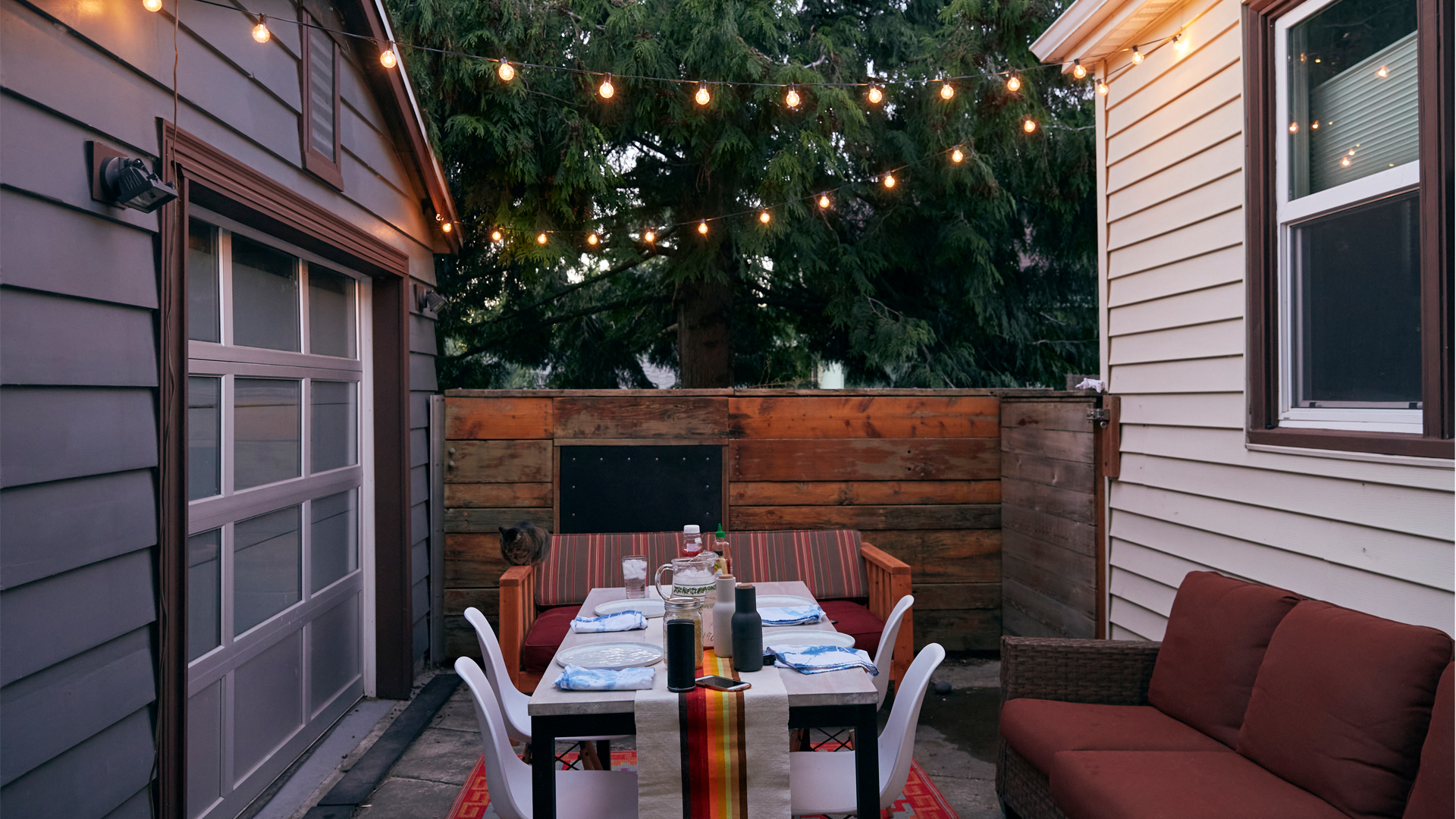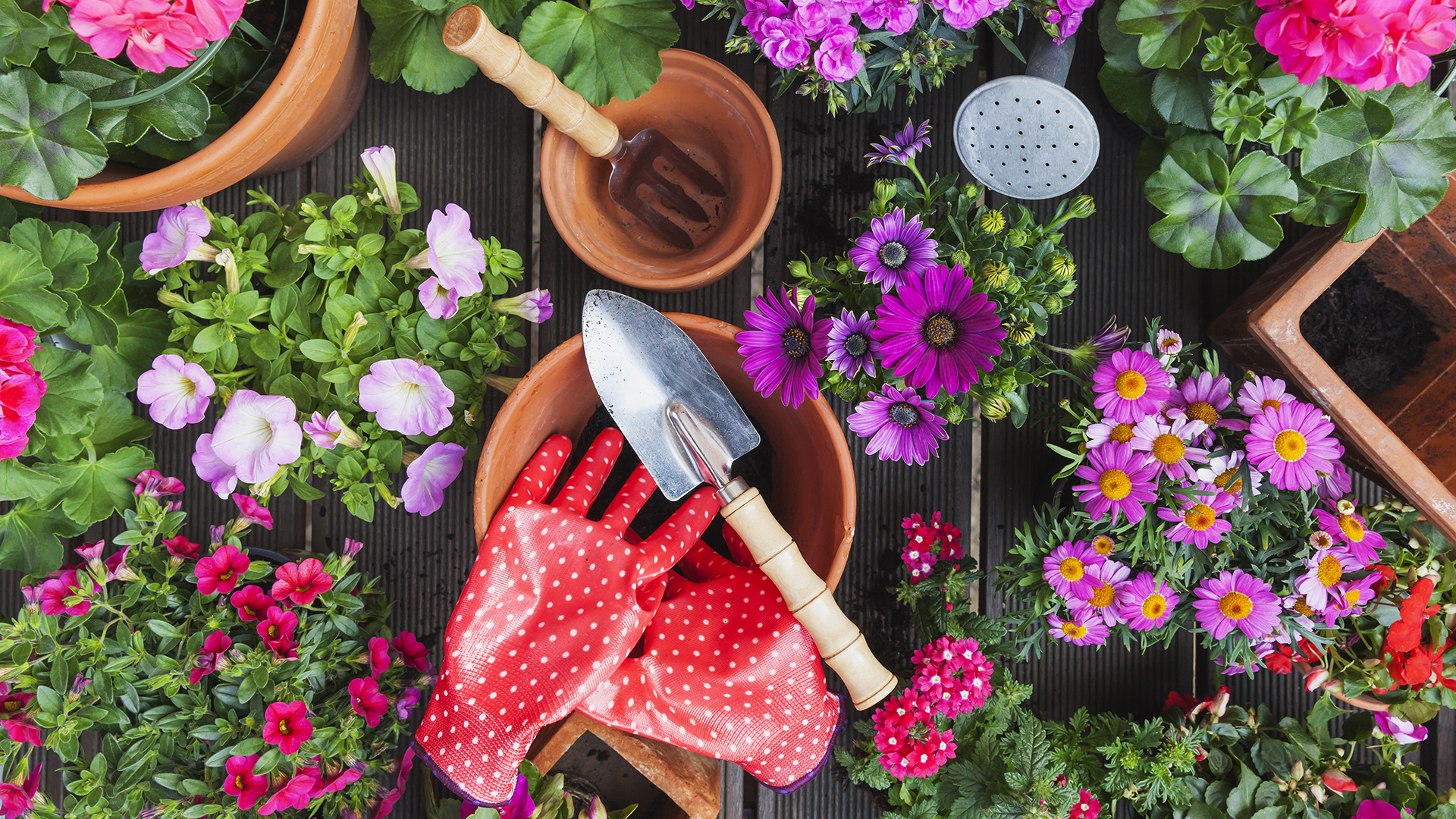Having a beautiful backyard is one thing, but if you are short on time or enthusiasm, creating a low maintenance garden will help you to really enjoy your outdoor space. Not everyone wants to spend hours weeding or pruning - and if you have mobility issues, a low maintenance garden can ensure you can still enjoy gardening without putting too much stress on your back or knees.
There's a number of ways to make your backyard low maintenance, whether it’s choosing the right kind of plants, replacing the lawn with paving slabs, building raised planters or mulching to help keep the weeds at bay. Here, we explain just some of the ways you can build a low maintenance garden, so you can really enjoy your outdoor space year-round. Whether this means investing in one of the best electric weed eaters to make keeping your lawn clear of pesky weeds easier, or simply getting rid of your lawn altogether, there are plenty of things to try.
Horticulturalist Kate Watkinson explains what makes a garden low maintenance and how readers can get the most ‘bang for their buck’ time and effort-wise. “Our gardens are more important than ever to us these days, not only as a place for us to relax and maintain a feeling of mental wellbeing, but also as an opportunity to grow our own food for physical and economic benefits. Gardening should be a joyful experience, but if you are just about to flex your green fingers for the first time, keeping to these tips below will ensure that your garden is low maintenance and stress free!
"Those with smaller or urban gardens can still enjoy an abundance of beautiful edible bounty, when growing vegetables in pots. It’s amazing the types of veggies you can grow in this way from aubergines to cucumber to pepper to tomatoes, the list goes on. And if you grow varieties of ornamental plants that need overwintering, you can just pick up the pot and move to winter quarters with ease."
How to build a low maintenance garden
1. Ditch the lawn
Keeping grass looking great can take time - especially if you live in a region that is dry for much of the year. Lawns need watering and feeding - and regular mowing to really keep them looking their best (not to mention using one of the best lawn edgers for a neat and tidy finish). So if that’s a job you’re not willing to do, consider getting rid of your lawn - or at least don’t have so much of it! If you do want to keep some lawn, you could invest in one of the best robot lawn mowers, which can be set up to mow the lawn regularly. These mowers cut the grass into tiny pieces, which act as a mulch and help to feed the grass, so there’s no need to collect grass clippings.

2. Pave your garden
Introduce paving and gravel instead. You can still introduce planting pockets to break up the hard landscaping and soften edges, but it will be so much easier to look after than a lawn. Consider your paving material carefully, as some materials can stain easily or become slippery. A flat hard surface is a safer choice if you need a stick or frame to walk, or use a wheelchair. Consult a local hard landscaper about what is suitable for the weather conditions where you live.
3. Keep it covered with mulch
Mulch - such as bark chips - can be used to fill in spaces around plants. Cover your flower beds with mulch and you will achieve several things First, you will cut down on weeds, which find it hard to grow through the mulch, and second, you will reduce the need for watering, as the mulch helps to keep the moisture in the ground, rather than evaporating. Covering up the soil between the plants keeps it looking good too, and as the mulch decomposes, it helps to feed the soil. And mulch often smells great too. You may have to top it up now and again, but it is a simple job.
4. Use containers to change the seasons
You can keep your backdrop very simple by filling your backyard with evergreen plants and shrubs. Providing a green backbone to your outdoor space all year round, there will be few leaves to sweep up. To introduce seasonal color, simply introduce flowering plants in containers. Bulbs for the spring, flowering annuals in the summer, and flowering plants such as chrysanthemums, which look fabulous in containers in the fall.
5. Choose low maintenance bulbs
Bulbs are probably the easiest thing to grow. Pop the bulbs in containers or in the ground, and they will reward you with years of color. Spring bulbs should be planted in the fall (you may need to check that they will withstand the temperatures in your region - ask at your local plant nursery). Daffodils add a touch of sunny yellow, tulips come in all colors, while hyacinths bring a lush scent. Bulbs that bloom in the fall include dainty crocus, nerine and calla lilies.
Horticulturalist Kate Watkinson explains, "If you have a very busy lifestyle and do not have much time for tending your garden, look at growing evergreens and ornamental grasses These will add texture and bring hues of green to your outdoor area throughout the year, and can be near enough left to their own devices!’’
6. Create seating areas
If you want to lose the lawn, replace it with paved seating areas. Not only will you not have to do any mowing, but you will also create plenty of places to sit and enjoy your garden - rather than working hard on it! Add plants in containers around your seating areas, which will be easier to look after than large flower beds.
7. Build raised beds
Raised beds are generally filled with compost, so you won’t be introducing weeds into the area. They can also be mulched (as suggested above) to keep weeds at bay and retain moisture. If you have mobility issues or a bad back, raised beds on legs can make gardening easier - you won’t need to bend down or kneel to tend to your plants. They can also be used as extra seating, or raised to the correct level to allow a wheelchair user to enjoy gardening. Raised beds can make it easy to grow vegetables, too.
8. Introduce ornamental grasses
To add some height and movement to an evergreen backdrop, plant some ornamental grasses. They are happy to be left to their own devices, and in the fall and winter can add interest - ornamental grasses covered in frost look so pretty! In early spring, simply chop them right back and they will come back to life through the summer.
9. Make watering easy
An irrigation system will make your gardening so simple. It may take some time to get it set up, but once it’s ready, your watering is done for you - no need to worry if you go away for a few days, and no need to rush out into the garden before work to water before the sun gets too hot. Install a system with a timer and you won’t ever need to think about watering again!
Discover more guides for the garden…
Best pool heaters
Best swim spas
Best water heaters
Best patio heaters
Best hot tubs

